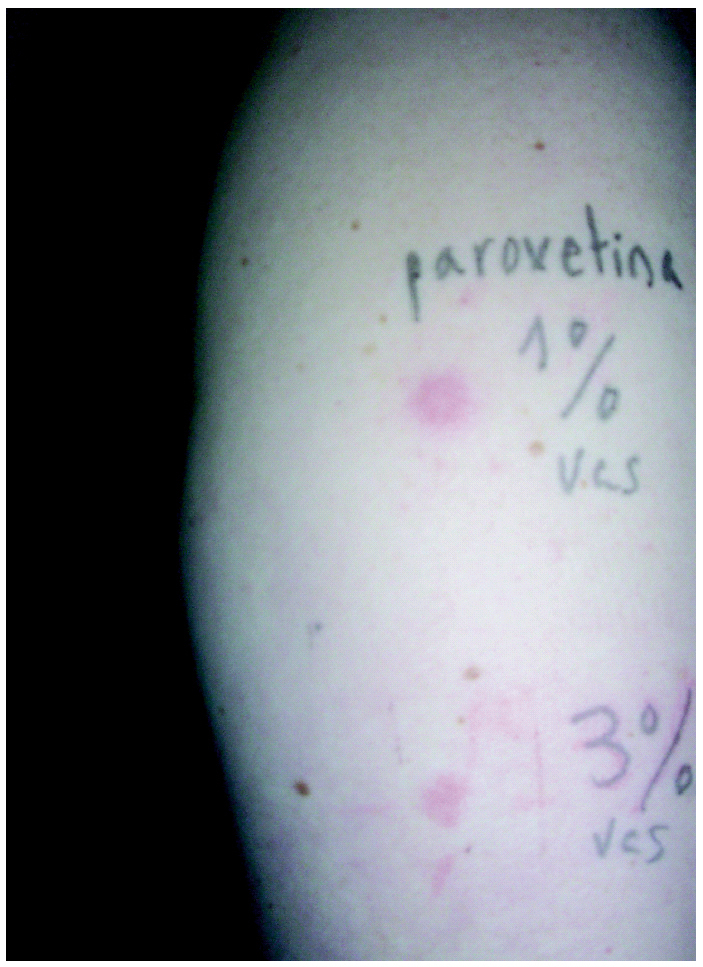Selective serotonin reuptake inhibitors antidepressants (SSRIs) have been widely used in recent years, but cutaneous adverse reactions have not often been reported. We describe a patient who developed a cutaneous reaction by paroxetine. Our case is of particular interest because we could demonstrate delayed hypersensitivity by patch testing.
CASE REPORT
A fifty-nine year-old woman who suffered from a depressive disorder received paroxetine 20 mg/day and alprazolam 0,50 mg/day. Several weeks later she was referred to our Unit because she developed an episode of generalized mild pruritc maculopapular exanthema. There was no mucosa or palm and sole involvement. She improved in a few days after treatment with corticosteroids, without scaling or residual lesions. A depression was diagnosed years ago and she took different drugs, but she did not remember their names. After this episode she was treated with amytriptiline.
ALLERGY TEST
Several weeks after the exanthema, we performed patch tests with paroxetine 1 % and 3 % in pet, with a positive reaction (2 +) in both at D3 (fig. 1). Eight controls were negative. To study a possible cross reactivity, we performed patch tests with another SSRI: sertraline 3 % pet, citalopram 3 % pet, fluoxetine 3 % pet and fluvoxetine 3 % pet, with negative results. The patient rejected a challenge test with any of these substances because she had alternatives. The patch test with alprazolam 5 % pet was negative and she started taking this drug again without any problem.
Figure 1.--Patch test.
DISCUSSION
Although SSRIs are widely used, there are only a few cases of cutaneous adverse reactions reported. Toxicodermias of different severity due to several of these drugs have been described. The most common type is a maculopapular rash 1-4 like our patient, but vasculitis 3,5, necrolisis epidermal toxic 6,7, Stevens-Jonhson 7, photodermatitis 3,8 and pseudolinfoma 9 have been reported too. The onset of these reactions usually occurs a few days after the drug has been introduced 1-4 but in our case the first lesions did not appear until several weeks later. In one case the diagnosis was made with a patch test 3, but there is no reference to the concentration and vehicle.
Cross reactivity between SSRIs is described in spite of their different chemical structures 1,2,4. In our case we could not demonstrate this because the epicutaneous tests were negative and the patient rejected the challenge tests.
SUMMARY
The increasingly extensive use of SSRIs will probably result in a increase in cases of cutaneous reactions due to these drugs. This case describes a generalized exanthema by paroxetine and the positive result of the pacht test indicates delayed hipersensitivy.






